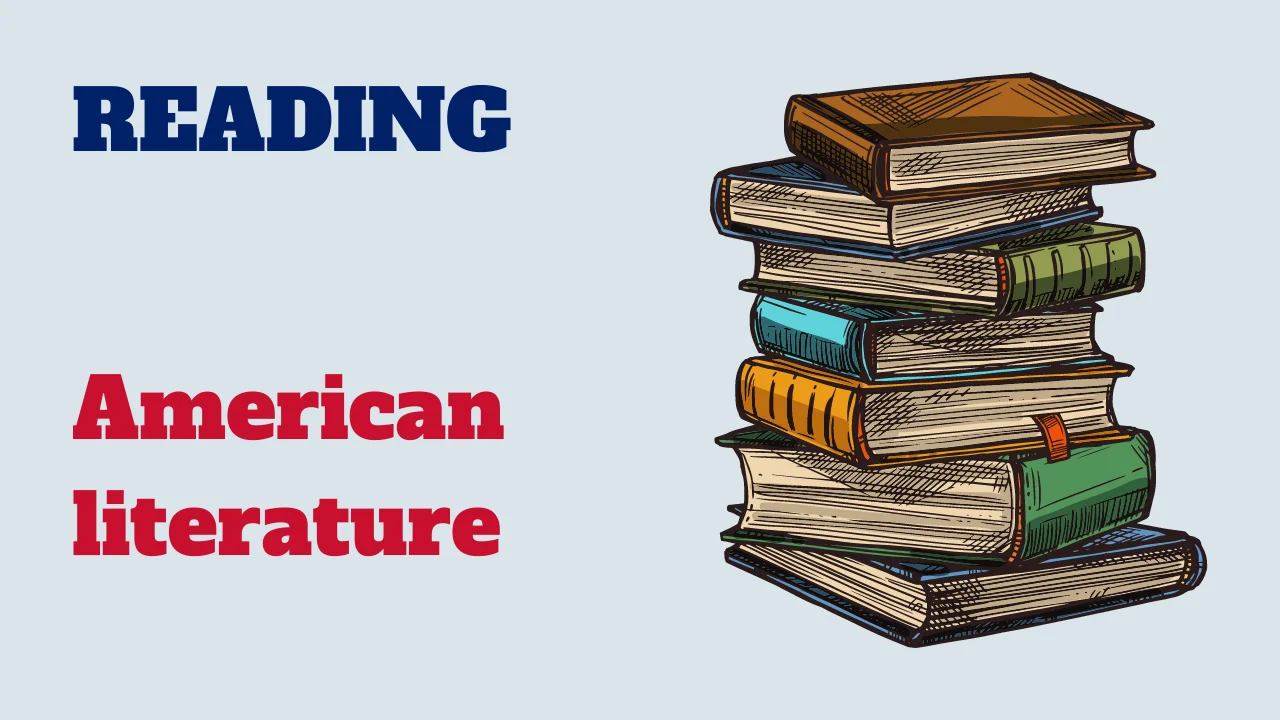Welcome to a reading activity about American literature, a rich tapestry of literary works that reflect the diverse cultural, social, and historical landscape of the United States. From the early colonial period to the modern era, American literature has evolved and flourished, encompassing a wide range of genres, themes, and voices.

In this reading activity, we will delve into the major periods, influential writers, and significant movements that have shaped American literary tradition.
Text: American literature
American literature, encompassing the diverse works produced in the United States, reflects the country’s complex history, culture, and evolving identity. It spans from the early colonial period to contemporary times, showcasing a rich tapestry of voices and styles.
The early colonial literature was heavily influenced by European settlers, particularly the Puritans. These works, such as sermons, diaries, and religious tracts, often focused on themes of survival, faith, and community. Notable examples include Jonathan Edwards’ fiery sermons and Anne Bradstreet’s poetry, which provided a glimpse into the struggles and spiritual lives of early settlers.
The 19th century marked the emergence of a distinctly American voice in literature. Romanticism and transcendentalism flourished, with authors like Ralph Waldo Emerson and Henry David Thoreau championing individualism and nature. Simultaneously, Nathaniel Hawthorne and Herman Melville explored darker themes of sin, guilt, and the human condition, as seen in works like “The Scarlet Letter” and “Moby-Dick.”
The rise of realism and naturalism in the late 19th and early 20th centuries brought a shift towards more accurate portrayals of everyday life. Authors like Mark Twain and Henry James focused on the intricacies of social dynamics and individual experiences. Twain’s “Adventures of Huckleberry Finn” offered a critical look at race and identity, while James’ novels delved into the complexities of human psychology.
The 20th century witnessed a surge of innovation and diversity in American literature. The Harlem Renaissance of the 1920s celebrated African American culture with voices like Langston Hughes and Zora Neale Hurston. Modernism, led by writers such as F. Scott Fitzgerald and Ernest Hemingway, broke traditional forms and experimented with narrative styles.
Post-World War II literature saw the rise of the Beat Generation, with figures like Jack Kerouac and Allen Ginsberg challenging societal norms. The latter half of the century also brought a spotlight on marginalized voices, including those of women, LGBTQ+ individuals, and people of color. Authors like Toni Morrison, Alice Walker, and Sandra Cisneros enriched American literature with their unique perspectives and storytelling.
In contemporary times, American literature continues to evolve, reflecting the nation’s ongoing social and cultural changes. Diverse voices and innovative narratives ensure its relevance and vibrancy in the global literary landscape.
Comprehension questions
Congratulations on completing the exploration of American literature! By examining the major periods, influential writers, and significant movements in American literary tradition, we gain insight into the diverse cultural, social, and historical contexts that shape literary expression in the United States. From the revolutionary writings of the founding fathers to the contemporary voices of immigrant, ethnic, and LGBT writers, American literature continues to evolve and reflect the rich tapestry of American life. Keep exploring and discovering the myriad voices and narratives that contribute to the vibrant landscape of American letters!



